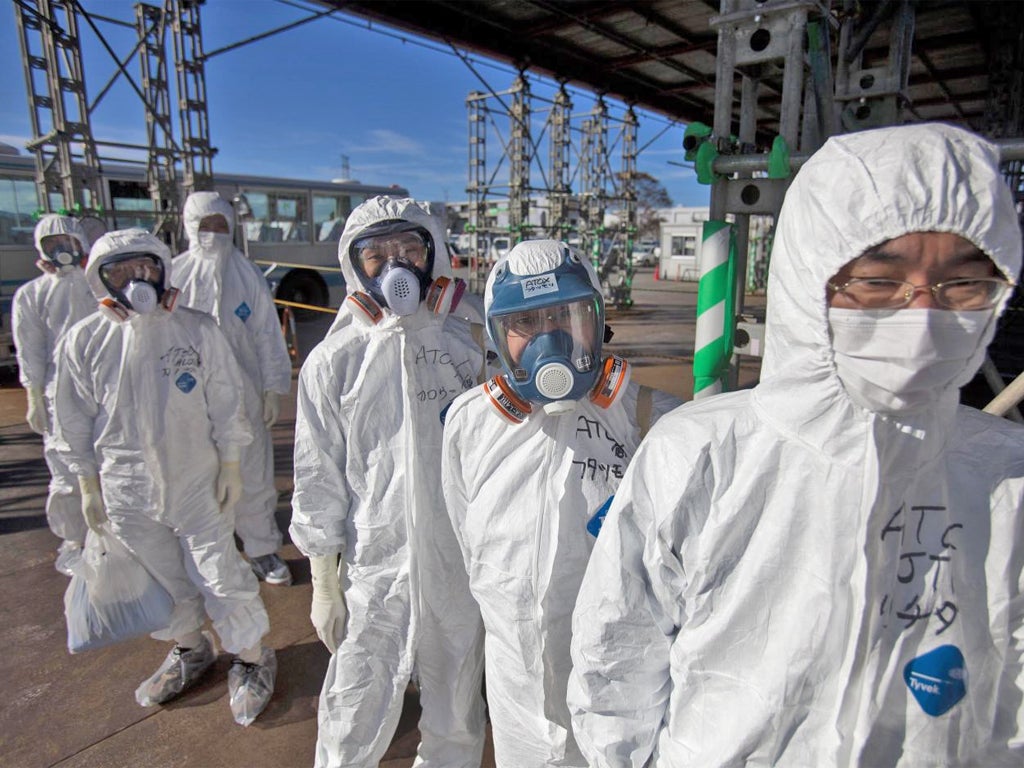Battle to control Fukushima has just 'stored up' dangers

Your support helps us to tell the story
From reproductive rights to climate change to Big Tech, The Independent is on the ground when the story is developing. Whether it's investigating the financials of Elon Musk's pro-Trump PAC or producing our latest documentary, 'The A Word', which shines a light on the American women fighting for reproductive rights, we know how important it is to parse out the facts from the messaging.
At such a critical moment in US history, we need reporters on the ground. Your donation allows us to keep sending journalists to speak to both sides of the story.
The Independent is trusted by Americans across the entire political spectrum. And unlike many other quality news outlets, we choose not to lock Americans out of our reporting and analysis with paywalls. We believe quality journalism should be available to everyone, paid for by those who can afford it.
Your support makes all the difference.The operator of the Fukushima nuclear plant is expected to declare today that its crippled reactors have been stabilised, nine months after an earthquake and tsunami triggered the world's worst nuclear accident in 25 years.
But critics, including a journalist who worked undercover at the plant, have rubbished the claims by Tokyo Electric Power Co (Tepco) that the crisis is over. And Japan's government admitted this week that dismantling the reactors and the 260-tonne lethal cargo of nuclear fuel will take up to 40 years.
Tepco plans to announce that radiation releases from the plant are under control and the temperature of its nuclear fuel is consistently below boiling point: the two conditions set by the beleaguered utility for what it calls "cold shutdown conditions". Masao Yamaguchi, a Tepco spokesman, called the achievement a "milestone".
Much of the fuel in three of Fukushima Daiichi plant's six reactors has melted through the base of the containment vessels. Engineers are still pumping 4,000 tonnes of water a week on to the fuel to keep it cool, leaving 200,000 tonnes of heavily contaminated water on site. Despite the efforts, the rush to bring the plant under control is storing up complex problems, according to Tomohiko Suzuki, who spent a month working at the plant during the summer and has released a book this week about his experiences. "The question is, can they maintain this temperature for years and years?" he told reporters in Tokyo yesterday. "I believe the problems there are just starting."
Nuclear experts say the state of the molten fuel is still uncertain, with some speculating that the government is preparing to build a giant concrete "nappy" underneath the complex to stop radioactive substances leaking into the ground.
Mr Suzuki, for his part, paints an appalling picture of managerial callousness at the plant, claiming that after the first explosion on 12 March Tepco sent out a message to labour-dispatch companies saying: "Send us people who don't mind dying."
In the first few days of panic, workers were not issued radiation-measuring equipment and were not properly logged in, he said. "There's no way to track down the people who were at the site in March and April."
Workers are under pressure to extend their time working in radioactive conditions and have learned to cheat exposure-measuring dosimeters by putting them back to front and wearing them in their socks, he said. "Tepco does not instruct us to take these measures, but it sets tasks that force people to cheat with these dosimeters. Everyone understands this."
Tepco has refused to comment on Mr Suzuki's claims. Mr Suzuki was sacked from the plant in August, in part, he said, because he was the only worker who remained awake taking notes during Tepco briefings.
Join our commenting forum
Join thought-provoking conversations, follow other Independent readers and see their replies
Comments